David Murphy
Mentor
I don't know if anyone here (M. Flory excepted) knows this camera, but I acquired it a couple of years ago in a trade. The Kalloflex is a vintage Japanese TLR that seems to be distinguished from many of its fellows by a four element taking lens, crank wind, and very serious build quality (it's a heavy little beast). The collectors have discovered this camera now, and good ones seem to sell for about $200 on the old auction site.
With Google one can find some short articles on this camera and a manual on the Butkus site. The 75mm F3.5 Prominar lens is said to be very sharp and I concur. My copy is in great condition and the camera is a real pleasure to use - feels very solid, unlike some other early Japanese TLR's (although I still like most all of them). The camera uses Bay-1 accessories which is very handy.
Shown here is my Kalloflex and some recent shots from the California desert. The film was Fuji ISO 100 color print film processed at Walmart and scanned on my Canonscan 8800F.
Oh yes, the Kalloflex was made by Kowa which in later years made the popular Kowa Six medium format SLR system.
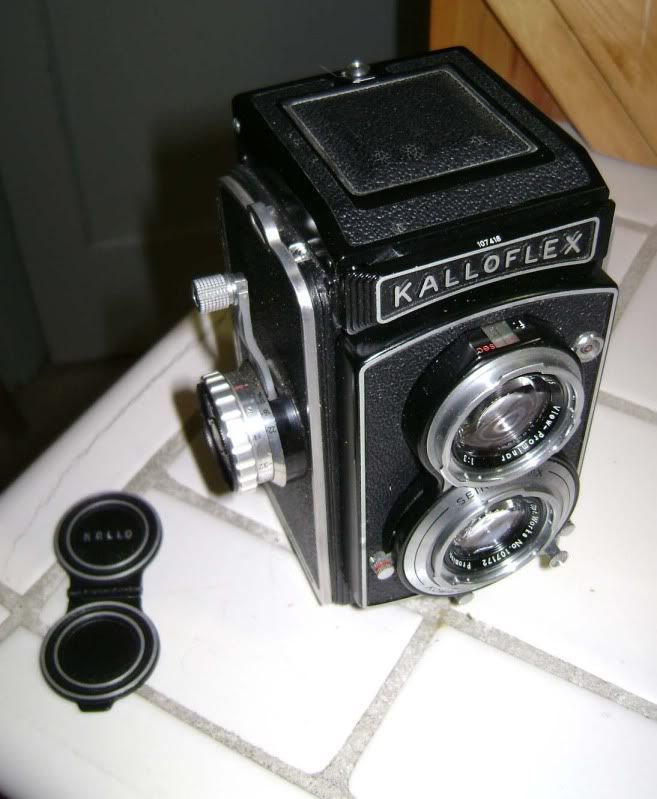
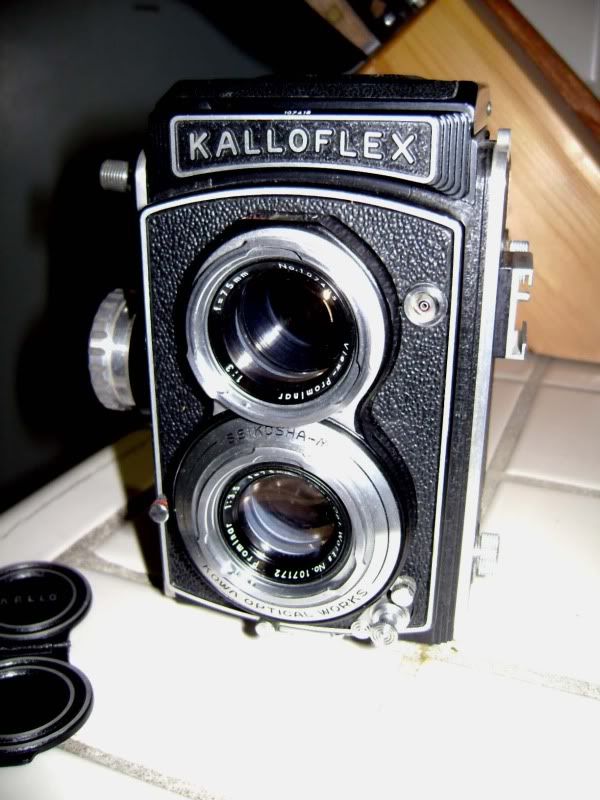
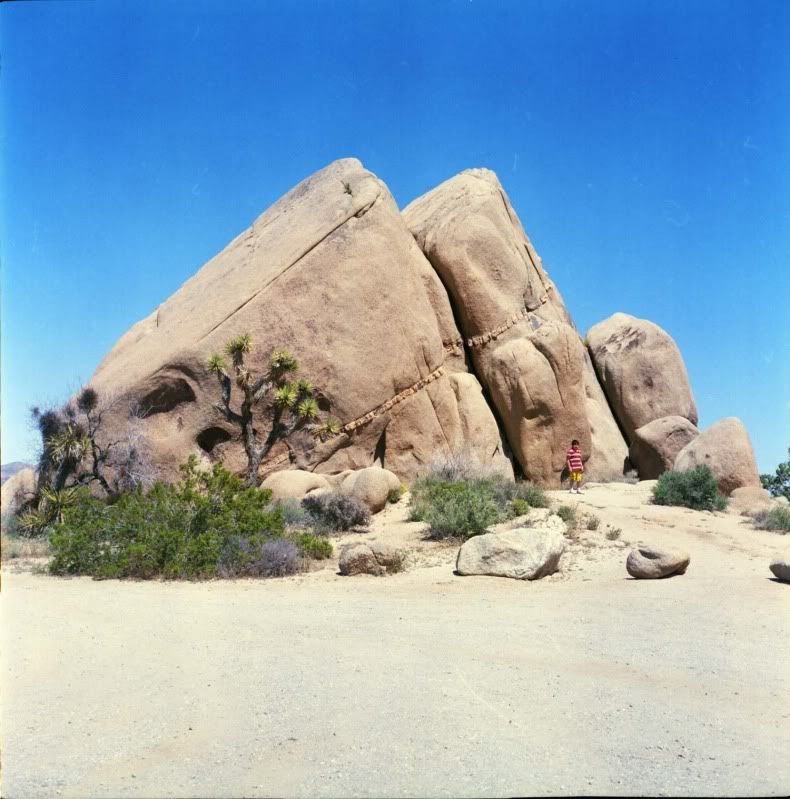
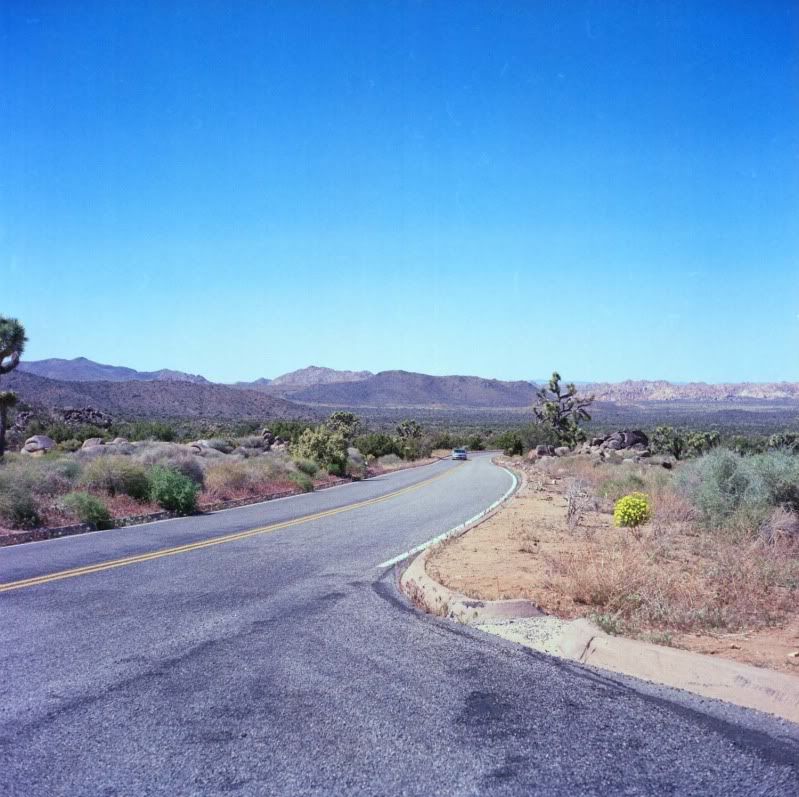
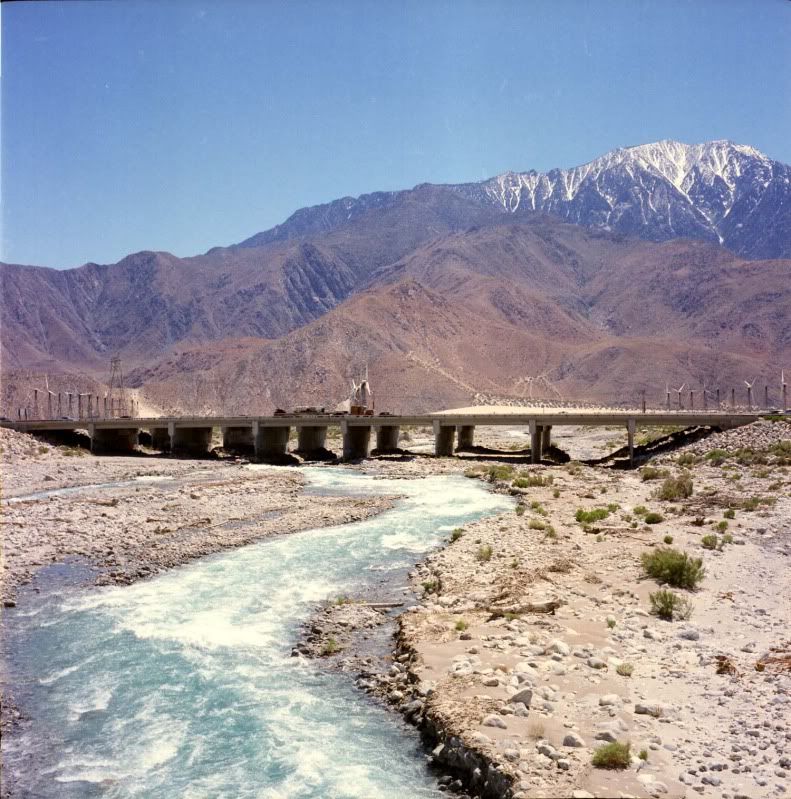
With Google one can find some short articles on this camera and a manual on the Butkus site. The 75mm F3.5 Prominar lens is said to be very sharp and I concur. My copy is in great condition and the camera is a real pleasure to use - feels very solid, unlike some other early Japanese TLR's (although I still like most all of them). The camera uses Bay-1 accessories which is very handy.
Shown here is my Kalloflex and some recent shots from the California desert. The film was Fuji ISO 100 color print film processed at Walmart and scanned on my Canonscan 8800F.
Oh yes, the Kalloflex was made by Kowa which in later years made the popular Kowa Six medium format SLR system.





Last edited:
Chriscrawfordphoto
Real Men Shoot Film.
I've never heard of it, David, but it looks like a really cool camera. The pictures you made are great...at $200 it seems like a bargain, given what Yashicamats and Minolta Autocords are going for on eBay now.
oftheherd
Mentor
Never heard of it either, but I am impressed with the photos you got with it. Wonder why more weren't made and it wasn't more popular and well known?
Ezzie
E. D. Russell Roberts
I've been pn the lookout for one for over half a year now. I have a Kowa Super 66, and its main selling point is its optics. The lenses are nothing short of fantastic. So when I started investigating the world of TLR's my first choice was a Kalloflex. They are however very rare. I've not seen one sold on ebay for several months. Had I seen one fo $200, I'd have snapped it up in a flash. I have both a Tessar formula Flexaret, and a Rollei 2.8, but I still want one.
Nice picutres by the way, the first one of the rock and boy especially.
Nice picutres by the way, the first one of the rock and boy especially.
hanskerensky
Well-known
I have a December 1957 magazine of the Dutch photoshop Foka were a Kalloflex Automat was listed for 450 Dutch Guilders. With that price it was in the same league as a Zeiss Ikon Ikoflex 1c with the Tessar/Prontor SVS combination. Also in comparison, the Minolta Autocord in that same magazine was listed for 375,-- Dutch Guilders. So it seems that the Kallomat indeed was not cheap.
David Murphy
Mentor
The Kalloflex has one interesting quirk, that was not obvious to me until I read the manual more carefully: If one is to use the 1/500'th shutter speed setting, it must be set before advancing the film.
Here's the online manual (I also have an original copy):
http://www.butkus.org/chinon/kallo_flex/kallo_flex.htm
Here's the online manual (I also have an original copy):
http://www.butkus.org/chinon/kallo_flex/kallo_flex.htm
keytarjunkie
no longer addicted
My aunt gave me her Kalloflex years ago. The viewing mirror is cracked and it's in pretty rough shape, so I haven't bothered with it. I did some research back then, though...found almost nothing on it online! It's quite a nice little TLR. Didn't even know that it was made by Kowa but that makes sense.
David Murphy
Mentor
Yes it was apparently not cheap. It listed at $120 USD in 1957, which is about $920 in USD 2010 dollars. I imagine it was discounted a bit however. The Yashica Mat listed for $75, or about $575 USD in 2010. (all info from the Camerapedia and inflation calculators found online).I have a December 1957 magazine of the Dutch photoshop Foka were a Kalloflex Automat was listed for 450 Dutch Guilders. With that price it was in the same league as a Zeiss Ikon Ikoflex 1c with the Tessar/Prontor SVS combination. Also in comparison, the Minolta Autocord in that same magazine was listed for 375,-- Dutch Guilders. So it seems that the Kallomat indeed was not cheap.
This camera was a serious engineering effort and I imagine it could be viewed as one of many strategic attempts by a Japanese camera maker to take on the German medium format market (which they never really completely succeeded at doing).
Dan Daniel
Well-known
The Kalloflex has one interesting quirk, that was not obvious to me until I read the manual more carefully: If one is to use the 1/500'th shutter speed setting, it must be set before advancing the film.
That is actually pretty common for leaf shutters of that time. Early Minolta Autocords require that, and the Kalloflex is using the same source for shutters- Seikosha/Citizen. My Rolleiflex 2.8C also requires this, and the 2.8A (to get to 400, not 500).
On the Minolta and Rolleiflex 2.8C, there is a double exposure system. this allows you to cover the lens, fire the shutter, and do the desired setting before cocking the shutter again.
Last edited:
charjohncarter
Mentor
I have never heard of it, but look up the Ricoh Diacord G (there are some differences but not many). You will see that it is the same except for attachment on the film wind. So, help information on the Diacord will cross to your camera:
http://www.flickr.com/groups/1027510@N25/
By the way I have two of them (Diacords; and they are excellent and really only need shutter cleaning at times. I know some for that too).

http://www.flickr.com/groups/1027510@N25/
By the way I have two of them (Diacords; and they are excellent and really only need shutter cleaning at times. I know some for that too).

Last edited:
PMCC
Late adopter.
I really enjoy my Kalloflex, the unsung Humvee of TLRs. The detailed machining, engraving and overall build quality are astonishing, and the optics are capable of beautifully sharp results with rich, Tessar-like tonal range. It was pure genius for Kowa to mount the film advance lever (non-folding, always erect) co-axially with the focus knob on the right hand side. Together with the left hand shutter release, this made for a camera control layout that stands out among TLR designs. It's more user-friendly than the typical right-hand film advance/left-hand focus/right-hand shutter release combo, a configuration that sets up hand-movements to fight each other.
My one gripe is that the plano-convex ground-glass viewing screen lacks a Fresnel lens. Focusing pops in and out very positively, but the dark corners hamper composing in low light. I haven't checked out whether a replacement fresnel ground glass can be swapped in.
If I could find clean, working examples of the Kalloflex for $200, I would buy them all day long! They are beauties of design, precision and handling.
My one gripe is that the plano-convex ground-glass viewing screen lacks a Fresnel lens. Focusing pops in and out very positively, but the dark corners hamper composing in low light. I haven't checked out whether a replacement fresnel ground glass can be swapped in.
If I could find clean, working examples of the Kalloflex for $200, I would buy them all day long! They are beauties of design, precision and handling.
David Murphy
Mentor
Wow those flickr images are really sharp! I'll have to put the Diacord G on my list of desirable TLR's to own.I have never heard of it, but look up the Ricoh Diacord G (there are some differences but not many). You will see that it is the same except for attachment on the film wind. So, help information on the Diacord will cross to your camera:
http://www.flickr.com/groups/1027510@N25/
By the way I have two of them (Diacords; and they are excellent and really only need shutter cleaning at times. I know some for that too).

I see some similarities between the Kalloflex and the Diacord-G, but note that the focusing mechanism is different. The Diacord-G seems to have a lever focusing arm somewhat like the Minolta Autocord. I can imagine that these two designs and similar Japanese TLR designs at the time influenced each other a good deal, and that designers and ideas moved from company to company.
Last edited:
David Murphy
Mentor
Yes I agree with all of that. The glass focusing lens took some getting used to at first, but in fact I find that it is brighter than many ground glass screens of that era (I always deploy it with the magnifier for sharp focusing). The Rolleiflexes and 'cords are notoriously dim for instance, although now there are upgrades of course (and many a talented camera tech can improvise screen upgrades for other popular TLR's).I really enjoy my Kalloflex, the unsung Humvee of TLRs. The detailed machining, engraving and overall build quality are astonishing, and the optics are capable of beautifully sharp results with rich, Tessar-like tonal range. It was pure genius for Kowa to mount the film advance lever (non-folding, always erect) co-axially with the focus knob on the right hand side. Together with the left hand shutter release, this made for a camera control layout that stands out among TLR designs. It's more user-friendly than the typical right-hand film advance/left-hand focus/right-hand shutter release combo, a configuration that sets up hand-movements to fight each other.
My one gripe is that the plano-convex ground-glass viewing screen lacks a Fresnel lens. Focusing pops in and out very positively, but the dark corners hamper composing in low light. I haven't checked out whether a replacement fresnel ground glass can be swapped in.
If I could find clean, working examples of the Kalloflex for $200, I would buy them all day long! They are beauties of design, precision and handling.
And yes, the Kalloflex is pretty uncommon in good shape. They do appear though!
PMCC
Late adopter.
The Kalloflex screen is a bit quirky to use at first, but I agree with David, it beats the Rollei screens of the same era. The convex lens actually makes the ground glass pretty bright in the center. I also share the enthusiasm for the Diacord G, but it's no match for the Ricohmatic 225, which was the high-point of Ricoh TLR design. The Ricohmatic 225 carries on the robust dual-lever focusing system of the Diacord (made of stainless steel, unlike the fragile pot-metal Autocord lever), and goes a step further by using a Rolleiflex-style lever film advance crank with integral shutter cocking. The Diacords rely on knob wind and a rim-cocked shutter, which are simpler but slower to operate mechanisms. Like the Autocord, the Ricohmatic 225 also uses a top-to-bottom film path, which provides for superior fllm flatness.
The Kalloflex, Autocord, Diacord and Ricohmatic also all have light baffles in the film chamber, which cuts down on stray light scattering and hence flare. Rolleiflex incorporated this feature in the later versions of the Automat MX and in the Rolleicord IV, and only the very last Yashica model, the 124G, used internal light baffles. Most of the other early Japanese TLRs did not have light baffles -- the Kalloflex was one of the very first.
That said, they are all interesting cameras with good glass, and I'm happy to say I have used them all. Among the Japanese TLR lenses with 4-element f3.5 Tessar-type designs, I would rate the Autocord's Rokkor as the best of the bunch, by a hair, with the Kowa Prominar and the Ricoh Rikenon right up there. But I am talking taste as much as technology. Happiness is a roll of Neopan 400 or APX100 with any of the above.
The Kalloflex, Autocord, Diacord and Ricohmatic also all have light baffles in the film chamber, which cuts down on stray light scattering and hence flare. Rolleiflex incorporated this feature in the later versions of the Automat MX and in the Rolleicord IV, and only the very last Yashica model, the 124G, used internal light baffles. Most of the other early Japanese TLRs did not have light baffles -- the Kalloflex was one of the very first.
That said, they are all interesting cameras with good glass, and I'm happy to say I have used them all. Among the Japanese TLR lenses with 4-element f3.5 Tessar-type designs, I would rate the Autocord's Rokkor as the best of the bunch, by a hair, with the Kowa Prominar and the Ricoh Rikenon right up there. But I am talking taste as much as technology. Happiness is a roll of Neopan 400 or APX100 with any of the above.
shadowfox
Darkroom printing lives
Wow those flickr images are really sharp! I'll have to put the Diacord G on my list of desirable TLR's to own.
I see some similarities between the Kalloflex and the Diacord-G, but note that the focusing mechanism is different. The Diacord-G seems to have a lever focusing arm somewhat like the Minolta Autocord. I can imagine that these two designs and similar Japanese TLR designs at the time influenced each other a good deal, and that designers and ideas moved from company to company.
David, thanks for the intro to a cool TLR.
The focusing on the Diacord (and Ricohmatic) is unique as far as I know, it has two see-saw type levers on each side of the front of the body. Unlike Autocords which has a single bottom lever a'la Meopta Flexarets.
As far as build and optics quality, I *personally* think the Diacords and Ricohmatics are top dogs. Autocords are popular, but it's not the only good Japanese TLR, not by a long shot.
But, we are talking about Kalloflex here
shadowfox
Darkroom printing lives
I also share the enthusiasm for the Diacord G, but it's no match for the Ricohmatic 225, which was the high-point of Ricoh TLR design. The Ricohmatic 225 carries on the robust dual-lever focusing system of the Diacord (made of stainless steel, unlike the fragile pot-metal Autocord lever), and goes a step further by using a Rolleiflex-style lever film advance crank with integral shutter cocking. The Diacords rely on knob wind and a rim-cocked shutter, which are simpler but slower to operate mechanisms. Like the Autocord, the Ricohmatic 225 also uses a top-to-bottom film path, which provides for superior fllm flatness.
...
Happiness is a roll of Neopan 400 or APX100 with any of the above.
+1
Now we are going to all pay more for the Ricohmatic :bang:
PMCC
Late adopter.
Hah, we should be so lucky - Ricohmatic 225s are relatively uncommon, especially in top condition. When you see one, don't wait, just snag it. Still cheaper than an Autocord in comparable shape. And Ricohmatics are way more common than Kalloflexes. I think because Autocords are excellent performers, yet common enough to have a following, they tend to fetch more in the market than the arguably far more interesting Ricohmatics and Kalloflexes. Just my pet theory.
shadowfox
Darkroom printing lives
I have one, I paid for it cheaply because it's beat up cosmetically and not fully working. Paid for its service and CLA, totally worth it.
PMCC
Late adopter.
Good for you. Mine were working and in good shape. Nevertheless, I had Karl Bryan CLA them in preparation for the next 50 years and now they work like new, still bargains. Who did your CLA? Ricohmatic 225s are full of tricky interlocks (the shutter release fires only if waist level finder is open, crank is in home position, shutter is cocked and unlocked, etc.) and may be a challenge for some camera techs.
Finding someone to do a Kalloflex is even more challenging -- a total strip down, dissassembly and overhaul was done on mine, and now it hums like a Swiss watch. Very complicated mechanism. Even so, still a bargain.
Finding someone to do a Kalloflex is even more challenging -- a total strip down, dissassembly and overhaul was done on mine, and now it hums like a Swiss watch. Very complicated mechanism. Even so, still a bargain.
Ezzie
E. D. Russell Roberts
I would suspect Ross Yerkes would repair a Kalloflex if need be. He does everything else Kowa.
Share:
-
This site uses cookies to help personalise content, tailor your experience and to keep you logged in if you register.
By continuing to use this site, you are consenting to our use of cookies.

